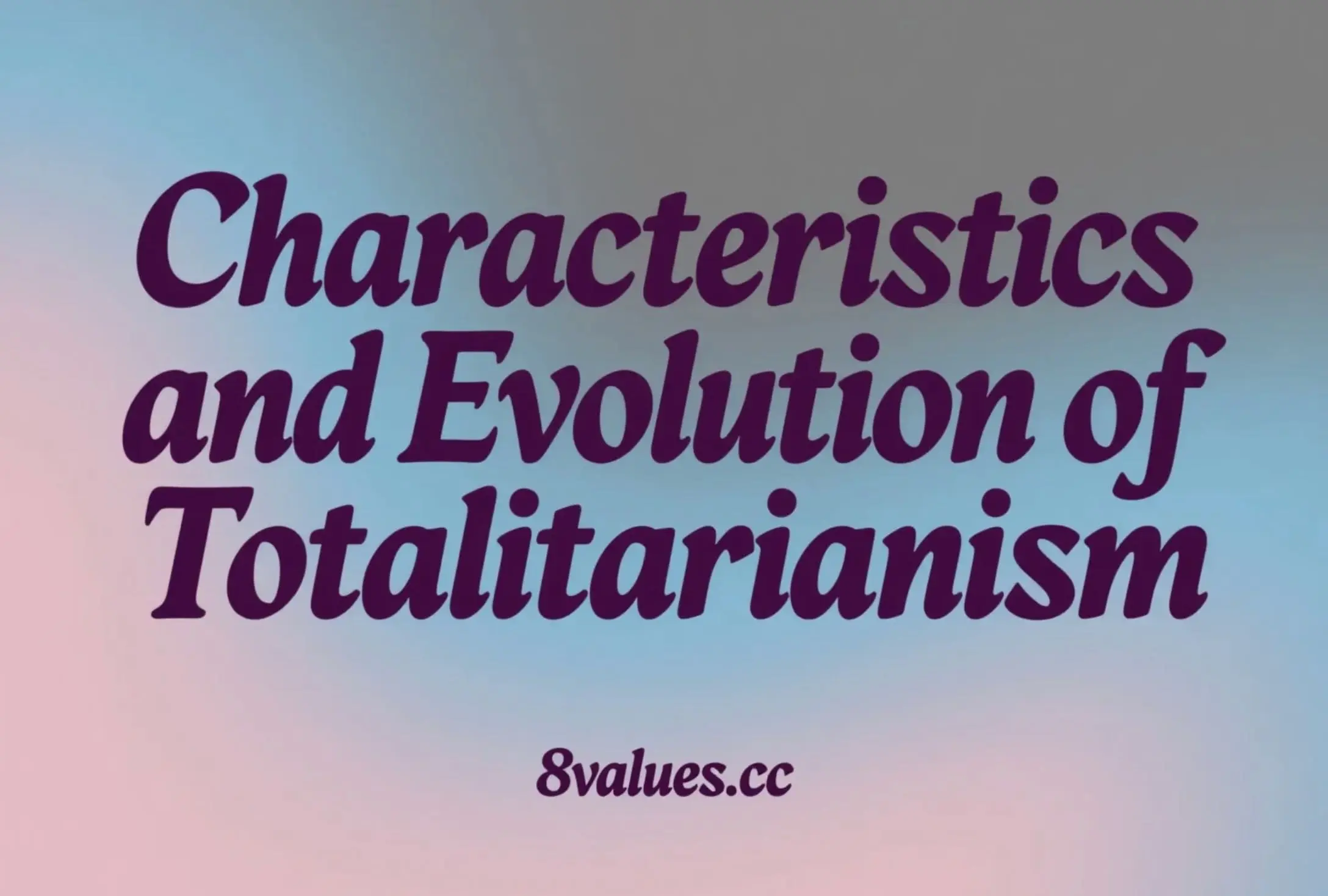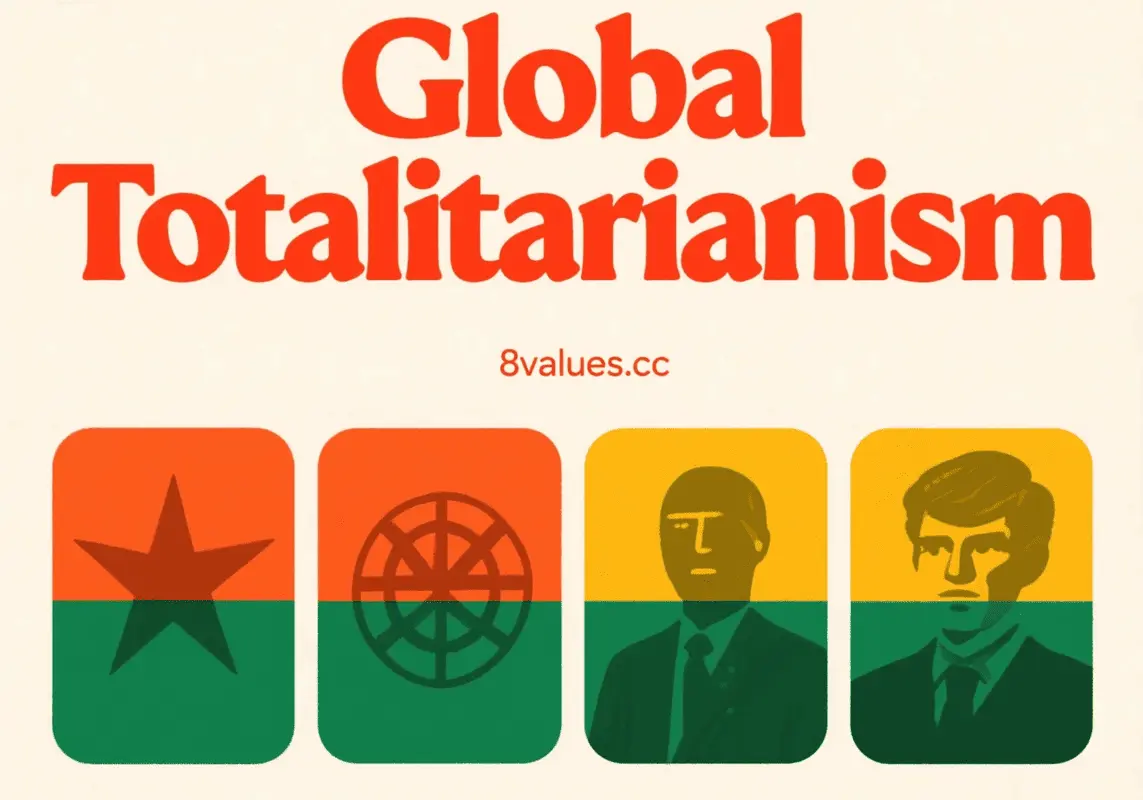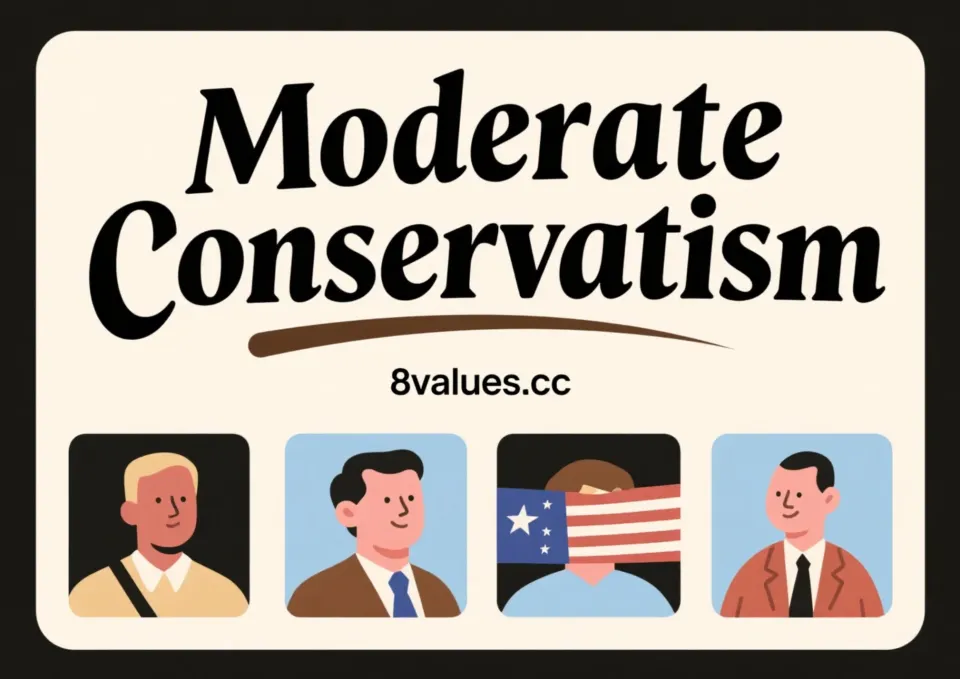Detailed Characteristics and Evolution of Totalitarianism: From Definition to Nationalism
This article explores the detailed characteristics of totalitarianism in depth, analyzes its evolution from its origin to the Cold War period, and its dangerous combination with nationalism, understands the profound impact of totalitarianism on society, personal life and human civilization, and reveals its core control mechanisms, historical cases and contemporary challenges.
Totalitarianism, as a unique form of government, has a far greater influence than simple dictatorship or authoritarianism. It not only pursues a monopoly on political power, but also is committed to the comprehensive infiltration and reconstruction of social and personal life . The following will elaborate on the core characteristics of totalitarianism and its evolution in history, especially the special forms that appear after being combined with nationalism.
The core characteristics of totalitarianism
Although the totalitarian regimes have diverse forms, there are common essential characteristics that together form a system of overall control.
1. Charming Leadership and Extreme Ideology
The totalitarian regime is often dominated by a charismatic leader who is regarded as a god or national hero. This worship of leadership helps mobilize the people and makes them fanatically support the regime. At the same time, the regime will implement an all-encompassing official ideology that regulates all aspects of life, provides legitimacy for regime behavior, and outlines means to achieve the ultimate goal, requiring citizens to obey completely.
2. Absolute control over public and private life
The core of totalitarianism lies in the pursuit of absolute domination of all areas of society , including the personal thoughts and morals of the economy, culture, education, the media and even citizens. It attempts to remove the boundaries between state and society and compress private space into a state that is almost non-existent. Promote regime ideology by controlling the education system, limit critical thinking, and strictly regulate religious activities to maintain ideological control. This comprehensive control aims to reshape society based on a specific ideology and create a whole new social order.
3. Suppress dissent and national terror
The totalitarian regime suppresses all political opposition through strict scrutiny, intimidation, imprisonment of dissidents . Secret police and large-scale surveillance systems are widely used to monitor citizens and maintain control. State terror is the essence of its rule rather than just means. Terrorism is not only used to suppress the opposition, but also to dominate and intimidate the people from within , eliminate personal conscience, and make it an embodiment of the movement of historical or natural laws. This was particularly evident in the Gulag camps in the Soviet Union and the Nazi extermination policy.
4. Monopoly media and propaganda indoctrination
The regime strictly controls all media and information channels, monopolizes the circulation of information , manipulates public opinion and instills official ideology through large-scale propaganda. This makes the public immersed in carefully woven narratives and difficult to access real information or critical views.
5. Eliminate political diversity and one-party dictatorship
Totalitarianism excludes any form of political opposition and independent institutions. It usually practices one-party dictatorship , with the state machine being completely loyal to the party and its leaders. Under this system, society does not have real decentralization, checks and balances, and state power is highly concentrated in the hands of a few people.
The evolution of the concept of totalitarianism and historical background
The term “totalitarianism” itself has undergone complex semantic evolution, reflecting the deepening of people’s understanding of this political phenomenon.
1. Early use of terminology and conceptualization of the Cold War era
The term "totalitarianism" was first proposed by Italian fascists in the 1920s, and initially had neutral or even positive meanings to describe the Mussolini government's comprehensive control program. Weimar German jurist Karl Schmitt also used the term "Totalstaat" (all-around state).
During the Cold War, the term became particularly prominent in the discourse of liberal democratic politics in the West, and was often used to emphasize the similarities between Nazi Germany and the Soviet Union under the Stalinian period, as a theoretical concept for explaining the nature of fascist and communist states. Karl J. Friedrich and Zbignev Brzezinsky define six key features of totalitarianism, including official ideology, one-party dictatorship, state terrorism, media monopoly, weapons control and centrally planned economy.
2. The groundbreaking analysis of Hannah Arendt
In the Origins of Totalitarianism, Hannah Arendt described Nazism and Stalinism as a whole new form of government that was essentially different from traditional autocracy, tyranny and dictatorship. She believes that the uniqueness of totalitarianism is that it dominates and intimidates the crowd from within through terrorism , and its essence lies in the combination of terror and ideology .
Arendt explores the origins of totalitarianism in depth, tracing the implicit elements of 19th-century anti-Semitism and European imperialism that ultimately condensed in totalitarian movements. She emphasized that the rise of totalitarianism is the same process as the decline of nation-states. It hates all existing systems, publicly expresses hostility to the existing legal system, and opposes the basic premise of nation-states, which is an international politics.
Arendt also proposed that " lostness " is a prerequisite for totalitarian rule. When individuals are isolated in society and lose their sense of commonality and communication skills, they are more likely to be attracted by the logical interpretation of totalitarian ideology, thus preparing for totalitarian organizations and ultimate rule.
She attributes the essence of totalitarianism to anti-civilization, anti-institutionality, anti-utilitarianism and anti-responsibility . Totalitarians despise reality, ignore utilitarianism, replace personal moral responsibility with fatalism, and rationalize large-scale killings into an inevitable manifestation of the historical process.
3. The concept of “resilent totalitarianism”
" Elastic Totalitarianism " is a key concept for understanding how totalitarian regimes maintain control. This concept points out that a totalitarian regime is not static, but is able to flexibly adjust its ideology and policies to address internal challenges and maintain control over a diverse population.
For example, the Soviet Union's ethnic policy towards the Donggan people reflected this "resilience". The regime initially gave cultural autonomy, but when this autonomy threatened its authority, it quickly took suppression measures. The Soviet Union's way of dealing with ethnic issues, that is, building and reconstructing national identity according to the needs of the state and leaders, is an example of "resilient totalitarianism." This flexible shift was particularly evident in the Soviet Union's policy on ethnic minorities, from initial support for the development of national culture to suppression and Russianization in the 1930s.
4. Traces between Plato and Totalitarianism
In his book "Open Society and Its Enemy", Austrian-British philosopher Carl Popper traces the roots of totalitarianism to Plato's "The Ideal Country" . He believed that the ideal city-state "Kallipolis" described by Plato had totalitarian characteristics, such as the high concentration of power, strict control of private life, and the manipulation of the people through "noble lies". However, the idea that the ancient polity is directly equated with modern totalitarianism remains controversial in the historical and philosophical circles.
National totalitarianism: The combination of extreme nationalism and totalitarian rule
"Ethnonationalist Totalitarianism" is a dangerous variant of totalitarianism that takes extreme nationalism as its core ideology and promotes it through totalitarian means .
1. Core composition and characteristics
- National superiority and exclusivity : declares that a specific nation has "natural superiority", defines other nations as "outsiders" or "threats", and excludes all cultural, language, religion or identity identity that are "non-national".
- Absolute national goals : put "national interests" above everything else, and do not hesitate to achieve goals such as territorial expansion and national "unification" through war and violence.
- Power monopoly and ideological control : State power is highly concentrated on a single leader or national elite group. Through monopolizing media and education, it forces the theory of national superiority and suppresses any doubts.
- Social infiltration and monitoring : Establish a strict monitoring system that requires individuals to be absolutely loyal to the "national regime". Any "disloyal" behavior may be regarded as "betrayal of the nation" and punished.
- Economic and resource control : The state directly controls core economic resources and allocates resources according to "national identity". The national group enjoys priority, while the alien group is marginalized.
2. Identification of typical features
The dominant model of national totalitarianism usually has the following identifiable characteristics:
- "Ethnic identity" becomes the only legal tag : national laws or policies regard "ethnic ownership" as the core standard for dividing civil rights, restricting non-national members of the nation to hold public office or enjoy complete citizenship.
- The dual narrative of "external threat" and "internal enemy" : long-term exaggeration of the nation facing external siege and internal traitors, gathering people's support by creating a sense of crisis, and finding excuses to suppress dissent.
- "Monopoly reconstruction" of culture and history : forcibly modify historical narratives, shape the nation as the "only creator of history", downplay or discredit the contributions of foreign nations, and forcefully promote the language, religion, and customs of the nation.
- The "nationalization" of violent machines : The core positions of the army, police and judicial systems are monopolized by their own nations, and the primary task is to "maintain the stability of the national regime". Protests against foreign nations are often cruelly suppressed.
- Closeness and external isolation : The regime tends to close national borders and restrict foreign exchanges, prevent external "heterogeneous ideas" from infiltration, and avoid the international community's attention to internal national oppression.
3. Historical cases and modern influences
Historically, national totalitarianism has caused great disasters:
- Nazi Germany (1933-1945) : With the "Aryan National Superiority Theory" as the core, it carried out systematic persecution and "massacre" on Jews, Gypsies, etc., and launched World War II in the name of "national survival space".
- Japanese Militarism (1930-1945) : Taking the "Yamato National Superiority Theory" as an ideology, expanding to the outside world, promoting "daily chemical education" and suppressing local ethnic culture.
- Khmer Rouge (1975-1979) : In the name of "purifying the Khmer nation", it forced the urban population and eliminated intellectuals, resulting in about 2 million deaths.
- Serbian radical nationalist regime (1990s) : During the disintegration of Yugoslavia, "national cleansing" was implemented for Bosnia and Herzegovina Muslims and Croats.
- Myanmar Military Government (1962-2011) : Suppressed Rohingya and other minorities on the grounds of "protecting the Buddhist nation" and carried out systematic persecution.
4. The difference between national totalitarianism and authoritarianism
Although both restrict freedom, authoritarianism mainly focuses on the monopoly of political power and reserves a certain space for social life (such as culture and economy), and does not necessarily emphasize national exclusivity. National totalitarianism requires comprehensive control over the whole society and individual thoughts , and a strong and extremely nationalist ideology that penetrates everything.
Totalitarian thinking and the challenges to a diverse future
The rise of totalitarianism is not only related to specific historical conditions, but also to certain tendencies in the human mindset, namely " totalitarian mindset ".
This mindset shows extreme rejection and intolerance of differences and diversity. During times of stress and anxiety, people desire “absolute” answers and simple solutions, which makes them vulnerable to manipulations that exploit fear and proactively succumb to simple, black-and-white totalitarian solutions. This thinking operates by reducing complex situations into a single variable (scapegoat), creating binary oppositions, establishing hierarchies, and concentration of power.
The harm of totalitarianism is multi-level and devastating: it tramples on human rights and causes large-scale humanitarian crises; tear the foundation of social trust through strengthening national confrontation; suppressing cultural diversity, leading to the singularization and rigidity of civilizations; and may trigger regional conflicts and global turmoil.
in conclusion
Totalitarianism, whether in the classic form or in the variant of national totalitarianism, poses a far-reaching and lasting threat to human society. It aims to completely reshape society and individuals through charismatic leaders, compulsory ideology, state terror, comprehensive control and elimination of diversity. Research by scholars such as Hannah Arendt reveals its unique nature, emphasizing its distinction from traditional tyranny and its deep roots in modern society.
Understanding the detailed characteristics of totalitarianism and understanding its evolution in history, especially the danger of its integration with extreme nationalism is an important prerequisite for maintaining democratic systems, safeguarding human rights and promoting the symbiosis of diverse civilizations. Vigilance and resistance to totalitarianism is the key to preventing mankind from repeating the mistakes of history.






